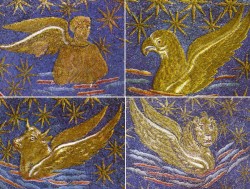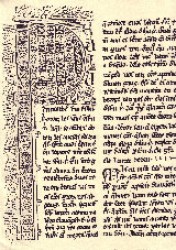|
|
|
 Christ also has his mythology. The church allowed itself to trim that growth of Apocryphal legends and only kept the four Gospels: the ones of the man, the lion, the bull and the eagle. The Council of Nicea declared only them ‘orthodox’. But the source of those four rivers, the unique and original proto-gospel, had disappeared! Christ also has his mythology. The church allowed itself to trim that growth of Apocryphal legends and only kept the four Gospels: the ones of the man, the lion, the bull and the eagle. The Council of Nicea declared only them ‘orthodox’. But the source of those four rivers, the unique and original proto-gospel, had disappeared!
Gregory of Nazianzus – an Asiatic Greek bishop of the 4th century, the patriarch of Constantinople – said:
‘Matthew wrote for the Hebrews;
Mark for the Romans;
Luke for the Greeks;
John for all the people in the Universe.’
|
 John’s Gospel John’s Gospel
The Cathars did not invoke the ‘Word’ but the ‘Paraclete’.
John’s gospel constituted almost all their Bible, it began their history.
The Revelation of Patmos was their epic. Their genius had the character of the eagle, symbol of the ‘Boanerge’ (the thunder’s son).
Through the Apostle John, ‘the beloved by the Saviour’, and through his gospel, the Cathars did not only belong to the purest evangelical current, but to the highest orthodox lineage. However, they went beyond by a strong impulse towards the highest Christian ideal. The Spiritual gospel was lived in the sense of the highest realisation: the Spirit-Man.
They were not only mystics, they were also Gnostics.
|
|
|
|
|




